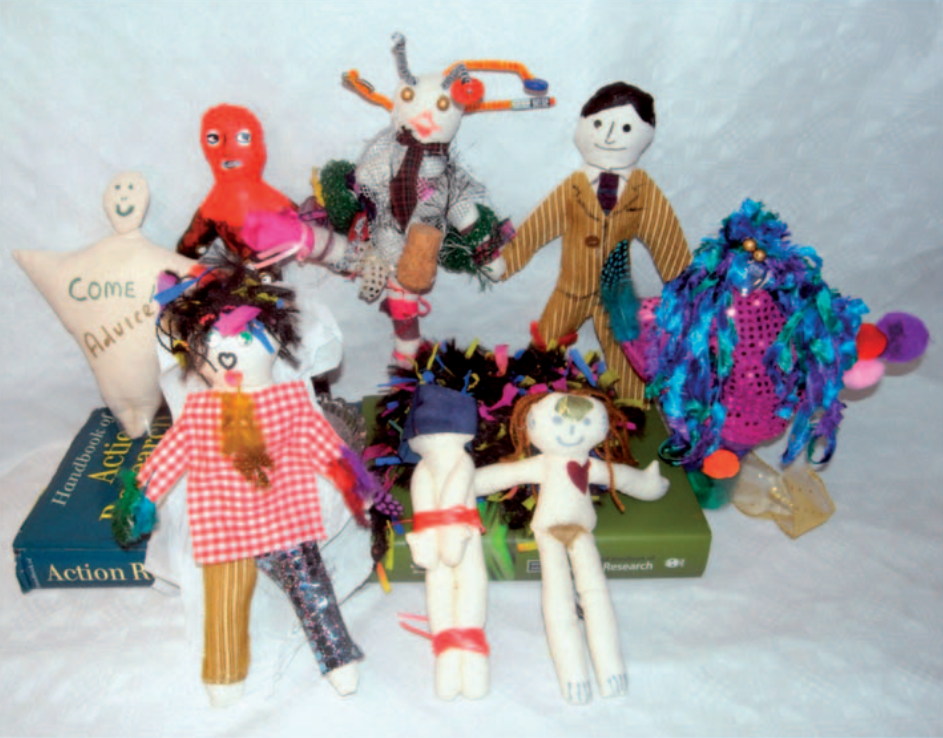
First-year cohort’s leadership touchstones. Courtesy Wicks and Rippin, “Art as experience: An inquiry into art and leadership using dolls and doll-making.”
In 2010, Wicks and Rippin conducted a two-day creative workshop for students on an MSc in Management Learning and Change. They asked the students to create what they called ‘leadership touchstones’, or dolls, as a method to explore the various definitions of leadership and how the students saw themselves as leaders.
On each day the students were introduced to various theoretical frameworks in the morning and worked on the dolls in the afternoon. Before beginning to craft their dolls, the students were presented with a table full of pictures. They each selected a picture that related to what they understood their own leadership style to be or to leadership in general.

Second-year cohort’s leadership touchstones. Courtesy Wicks and Rippin, “Art as experience: An inquiry into art and leadership using dolls and doll-making.”
The students could use a huge variety of arts and crafts tools for making their dolls, offering them a range of sensory properties to work with. At the end of the workshop, students reflected on what they learned. One of the students made a doll that was nude, covered only in drawings of eyes and a heart; she reflected that her leadership experience was not pretty, in fact, it made her often feel exposed and vulnerable, as if all eyes were on her. The heart represented that leadership should come from the heart. Through this exercise, the student posed important questions about her own positioning as a leader and was able to articulate a personal truth about herself and her leadership style. These dolls were able to aid students’ navigation of difficult insecurities concerning their ability to lead, insecurities that can often be difficult to describe in words.
One of the important reflections to come from this creative experiment was that the students really appreciated being taught the theoretical frameworks accompanying the task. In fact, they felt reassured of the task’s worth and more inspired to complete the creative workshop after first hearing the academic theory that supports arts-based strategies for learning development.
Overall, the students and professors felt that the doll-making workshop was a valuable way to explore leadership and enhance their understanding of themselves as leaders. The discussions that ensued between the students about their embodied understandings of leadership encouraged the students to see the subtleties and nuances of different leadership styles. For the professors, it became clear that critically reflective and restorative activities are important for leadership development.
Patricia Gayá Wicks and Ann Rippin. “Art as experience: An inquiry into art and leadership using dolls and doll-making.” Leadership Vol. 6, No. 3 (2010): 259–278. doi:10.1177/1742715010368767
